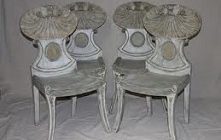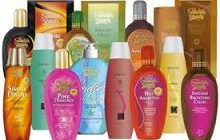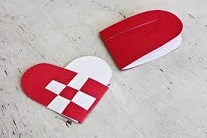Swedish textiles comprise a wide variety of weaving methods to produce geometric designs, ancient symbols and a range of patterns for special occasions. Read our guide for more facts and information…
Textile materials are made of specific types of fabric depending on the end-use. Curtains, garments and home furnishings are made of different types of cotton fibers, synthetic fibers and woolen fibers. Swedish textiles make use of cotton for most of its products. Silk and terry are not very common and fabrics made of hand-loom cotton are limited and sold directly to customers. Hand-printed fabrics use the batik method. Cotton fabrics of Sweden have sturdy textures with soft matte finish, or chequered designs with characteristic light tones.
Versatile uses of Swedish textile fabrics
Cotton is widely used in garments and furnishings, including cotton terry towels. Flax fabrics, linen, rugs and blankets are also common. Sweden does not have a silk garment industry and hence, silk is usually sold as a piece good for making garments. Printed cotton materials are mostly used for bed linen, while knitted cotton fabrics are preferred for curtains. Most Swedish people use ready-made products such as pillow cases and quilt covers for home furnishings and hence, piece goods have little over-the-counter sale. Curtains fabrics are factory-made to suit specific places such as homes, hotels, offices, hospitals and other public places, all of which are available in a wide range of prices. Interior decorating firms offer professional curtain makers for homes and offices.
Patterns used in Swedish textiles
Scania, located in southern Sweden, specializes in making wedding garments which are significant in small communities. ‘Rölakan’ is a technique that uses double interlocked tapestry to produce excellent geometric designs, with bright patterns that are known to have originated from ancient symbols. ‘Flamskväv’ is a technique that uses dove-tail tapestry comprising a black or brownish background, portraying vignettes amidst naturalistic flowers. These unique patterns of the Khalili Collection are appealing to connoisseurs and modern weavers as they also form an inspiration for today’s patterns. Swedish patchwork quilts dating back to the 1800’s are seen in Swedish museum collections. The design, fabric, technique and surface embellishment of these quilts, which commonly used diamond and star patterns woven with cotton and silk fabrics reflect the lifestyle of Swedish people in those days.
Unique ideas of Swedish textile designers
Peasants and fishermen in Scandinavia have used horse hair comprising the long fibers on the horse’s tail to make fishing lines, spun ropes, fishing mittens, horse reins and rugs. They even used it for milk sieves, flour sieves and brushes. Horsehair was also used for upholstery fabrics and probably in stiffening fabrics in coats. These days, they are mostly used for stuffing and for brushes. Kerstin Fröberg has been using horse hair for spinning and weaving and she has taken classes in different parts of Sweden. Her products have been exhibited in Sweden, and many articles have been published.
Lena Berglin, in cooperation with former Swedish National Institute for Working Life and Umea University, developed garments capable of monitoring health, including a cardigan for measuring heart rate, breathing frequency and muscular activity, in an attempt to help those suffering from health problems.





